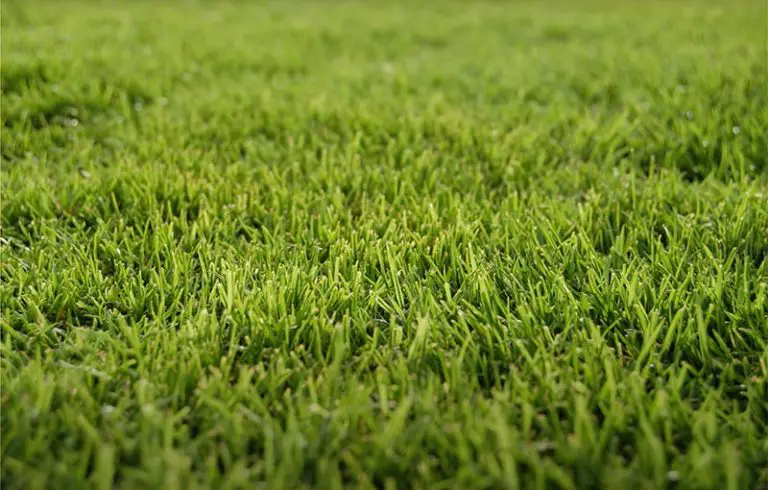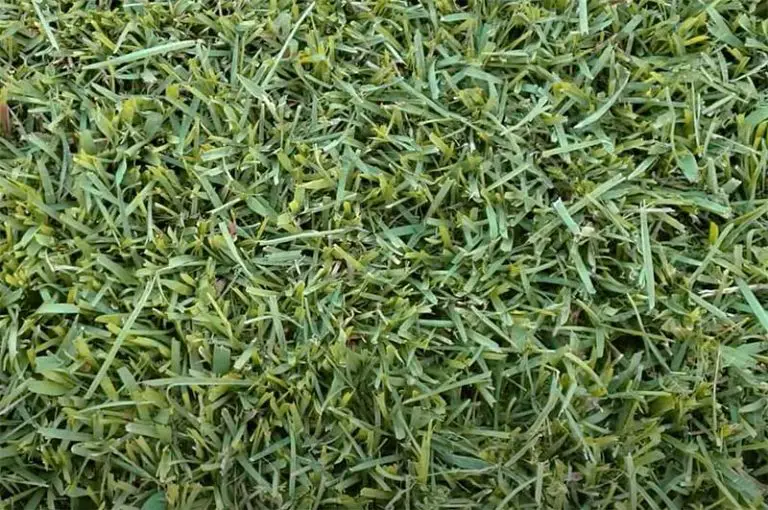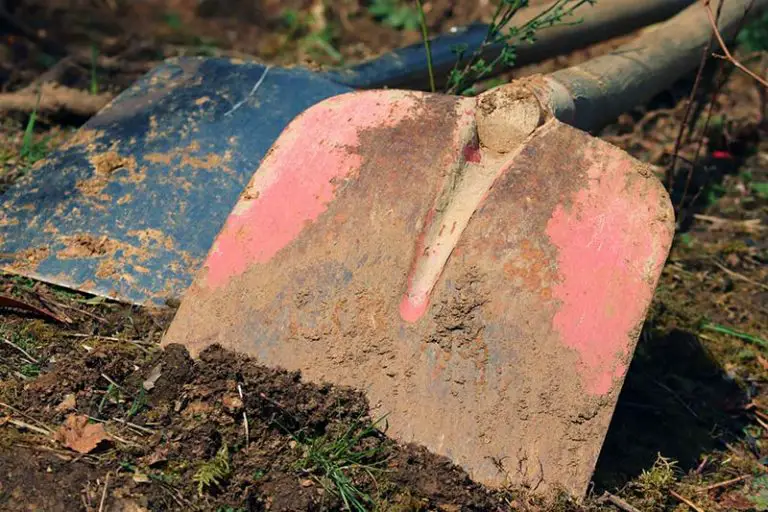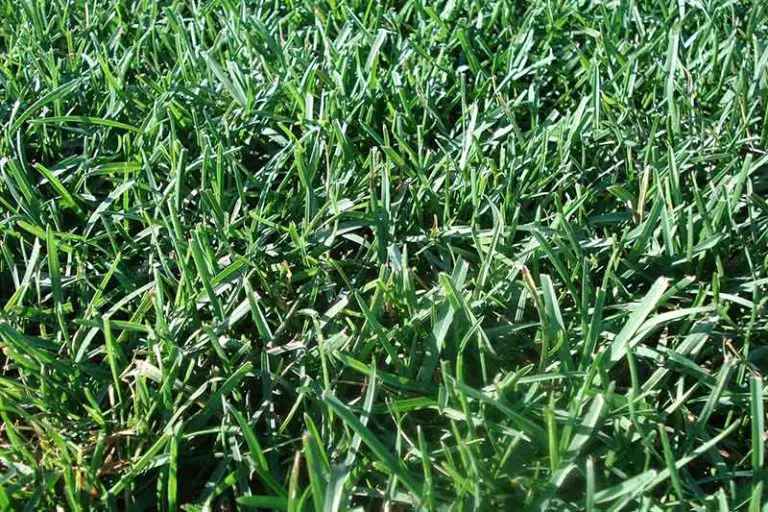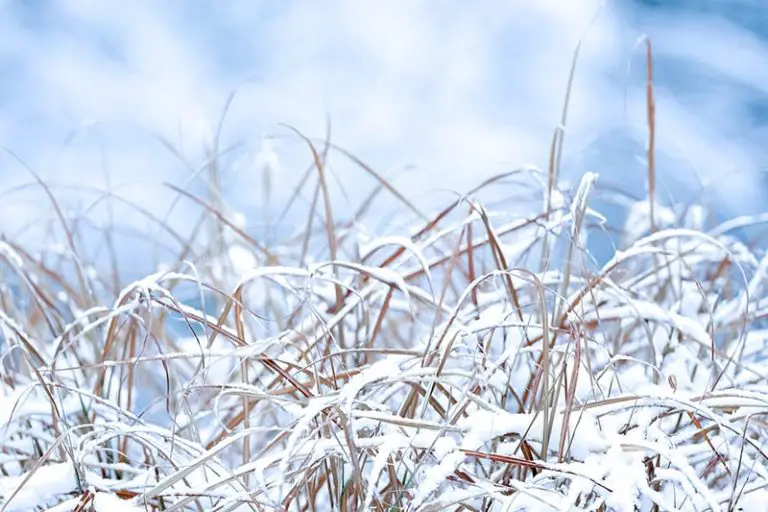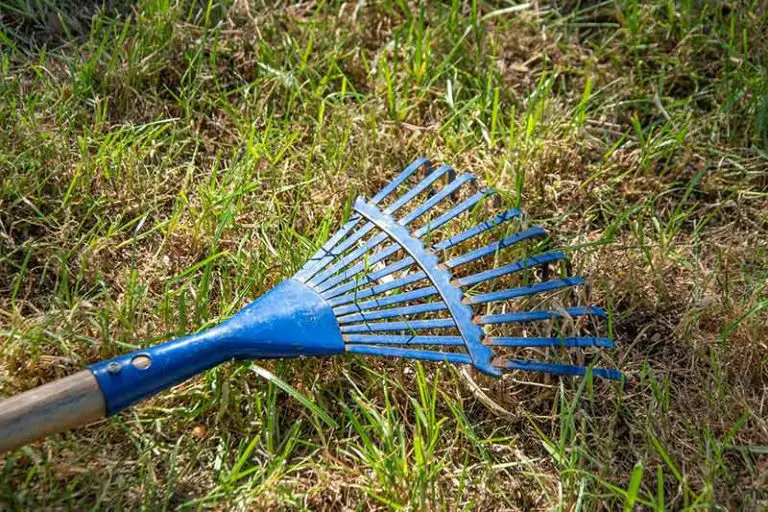Fall Lawn Seeding: How to Plant Grass Seed for a Healthy Spring
For those with cool-season grass, the optimal time to seed your lawn is in the fall between mid-August and mid-September. However, even if you miss this window, it doesn’t mean that seeding is impossible; you can instead dormant seed your lawn, the process of laying seed in the fall to see grass in the spring.
The dormant seeding process involves the same basic steps as planting grass seed at any other time of year. You’ll need to prepare your lawn, choose an appropriate grass seed, and sow the grass seed. Once the seed is in the ground, you water the planting area and then simply wait for the spring. As soon as temperatures warm up, your grass seed will begin germinating as normal.
How Late in the Fall Can I Plant Grass Seed?
If you intend to see growth before winter, you can plant grass seed in the fall as late as mid-October. However, this timing may vary depending on the climate of your area and the type of grass you’re growing. Those in cooler regions will need to plant earlier in the fall, ideally at the beginning of September.
The best way to judge whether you can still plant grass seed is by taking note of the weather and your grass type. For cool-season grass, you need to allow at least 4 to 6 weeks between seeding and the first frost of winter; although frost won’t kill grass seed, it will kill off young seedlings before they are fully established in the soil. For warm-season grass, you need to leave at least 8 to 12 weeks before the first frost in your area.
When is it Too Late to Plant Grass Seed?
It will be too late to plant grass seed when air temperatures drop below 55°F and the first frost is less than 4 weeks away. For those in the north, this means it typically isn’t possible to grow grass from seed beyond October or November.
However, after this point in the fall, it doesn’t mean that planting grass seed is impossible. If you have cool-season grass, you can instead opt for dormant seeding; although this won’t produce grass until the following spring, it’s still the next best time to seed cool-season grass. We explain dormant seeding in more detail below.
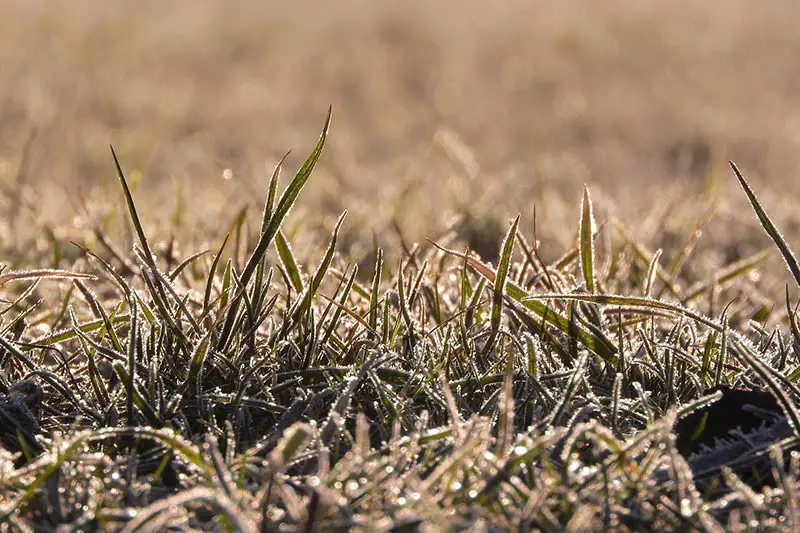
What is Dormant Seeding?
Dormant seeding is the process of planting grass seed in the late fall or winter after soil temperatures drop below 50°F. At this temperature, the ground is too cold to trigger the germination of the grass seed; it will lay dormant in the soil until temperatures warm up again in spring.
Note: Dormant seeding is only suitable for cool-season grasses. For this method to be effective, it’s also important that you live in an area that typically has cold, damp winters. If you live in a southern or warmer region and/or your lawn has warm-season grass, dormant seeding won’t benefit your lawn.
Benefits of Dormant Seeding
- Lower Watering Requirements
Watering grass seed is one of the most challenging tasks when attempting to grow a new lawn. Dormant seeding in the fall takes away a lot of the stress involved in keeping your seed watered.
When the winter snow melts in the early spring, it will moisten the soil around the seed. Then, thanks to rain showers in the spring, it’s likely that you won’t need to irrigate often. With that said, you should still monitor the planting area for drying and water the soil as necessary; this is especially important if you go through a dry period in the spring.
- Improved Seed-to-Soil Contact
For the highest germination rate, it’s crucial that you have good seed-to-soil contact in the planting area. One way to achieve this is by aerating before seeding; however, the aeration process can be laborious and isn’t always necessary, as you can seed without aerating first.
By dormant seeding in fall, the seed has more time to work its way deep into the soil before it germinates in spring. When the ground hardens with frost, the soil cracks, opening up the soil surface. This further encourages the seed to reach deeper into the ground, improving seed-to-soil contact.
- Early Greening in Spring
Dormant seeding in fall means that your grass seed is in place and ready for the next growing season. As soon as conditions are favorable for growth in the spring, the seed will begin germinating and establishing itself.
Not only does this mean that your lawn will start growing as soon as possible, but it also helps to choke out weed growth. Along with your grass, many other types of weeds start growing voraciously in the spring. Dormant seeding allows your grass to get a head start on these weeds, reducing the risk of an infestation early in the season.
- Allows Germination in Typically Shady Areas
Dormant seeding is the best choice if you’re trying to grow grass in typically shady areas. If your lawn is surrounded by trees, you should dormant seed; this will allow the seed to germinate before the trees grow foliage.
Even the most shade tolerant grass varieties need sunlight to germinate from seed. By planting grass seed in the fall, the seed will begin germinating very early in the growing season. This offers your seed a window of time before nearby trees have developed thick foliage. As a result, the seed has enough access to sunlight to germinate and establish itself; if planting a shade-tolerant grass, the mature grass will then be able to withstand the shadier conditions post foliage development.
- Proven to Be Better than Spring Seeding
Research shows that dormant seeding is better than spring seeding for cool-season grass types. The main reason for this is that, with dormant seeding, the grass has more time to establish itself before summer.
For cool-season grasses, growth slows down significantly in the summer. The hot and dry conditions are not ideal for cool-season grasses, especially young seedlings; periods of drought may cause the new grass to die off as it is particularly vulnerable at this stage of growth. By dormant seeding in fall, your grass has plenty of time to mature before the summer.
Drawbacks of Dormant Seeding
- Relies on Favorable Winter Weather Conditions
One of the key elements to success with dormant seeding is having favorable winter conditions to protect the seed. A layer of snow will provide this protection; this means your dormant seeding process is reliant on the weather conditions of your area.
For those in the north, this drawback isn’t much of a concern as these areas typically experience several months of snow cover. The snow acts like a layer of mulch, protecting the seed from being blown or washed away, drying out, or being eaten by wildlife. However, if you live in a milder region that experiences less snow cover, you’re more likely to lose viable seeds over winter.
- More Risk of Seed Being Eaten By Wildlife
Many types of wildlife, particularly birds, will feast on any grass seed they find in your lawn. With dormant seeding, your grass seed will be more exposed for a longer time over the fall and winter months.
With your seed being exposed for a longer time, it’s more likely you’ll lose seed eaten by birds or other types of wildlife. This is particularly true if your area doesn’t typically have extended periods of snow cover over the winter. To protect your seed from being eaten, you can install netting or lay straw mulch over the planting area.
- Can’t Apply Pre-Emergent Herbicide in Spring
A big disadvantage to dormant seeding is that it prevents you from being able to use pre-emergent herbicides in spring. Your lawn may be more susceptible to weed growth early in the season.
Pre-emergent herbicides are designed to kill weed seeds before they get a chance to germinate. Unfortunately, these products also prevent grass seed from germinating too. If you dormant seed in the fall, you won’t be able to treat your lawn with pre-emergent herbicide in the spring. You’ll therefore have to take more aggressive measures to kill weeds with post-emergent herbicides throughout the rest of the season.
- Ultimately Not the Best Time to Plant Cool-Season Grass
Although it’s preferable to spring seeding, dormant seeding isn’t the best method of planting grass. For cool-season lawns, the best time to plant grass is in the late summer to early fall.
The late summer to early fall is optimal for seeding cool-season grass as it provides the ideal growing conditions for this grass. Also, at this time of year, weeds like crabgrass and dandelions start to die off; this leaves your cool-season grass with more space, nutrients, and water to thrive.
What is Frost Seeding?
Frost seeding is a type of dormant seeding specifically carried out on moist soil right before freezing weather. This method utilizes the frozen ground to improve seed-to-soil contact over the winter months.
As the soil freezes and thaws over the winter, the grass seed will work its way further into the ground. When the soil freezes, this creates cracks in the soil surface. These cracks create small pockets for the seed to fall deeper into the turf. When the soil thaws and dries out, it fills in the pockets of soil that the freeze created. This covers up your grass seeds and puts them in perfect position for germination in the spring.
What is Snow Seeding?
Snow seeding is another type of dormant seeding. This method involves sowing the grass seed immediately after a light snowfall.
For this method to be successful, there should be no more than 1 inch of snow on the lawn. Ideally, there should only be light snow coverage, and bare spots of the lawn should still be visible. All you need to do is spread the grass seed over the areas that need thickening up. When the snow melts, it will carry the grass seed into the turf, improving seed-to-soil contact.
What’s the Best Fall Grass Seed for Dormant Seeding?
The best fall grass seed for dormant seeding would be a cool-season grass type, ideally Kentucky bluegrass, tall fescue, or perennial ryegrass. You can opt for a blend of all of these grasses.
When choosing which fall grass seed would be best for your lawn, you need to weigh up a few factors. You should factor in aspects like traffic tolerance, shade tolerance, and cold and drought tolerance; you also need to consider how much maintenance you want to carry out throughout the growing season. If you want to reap the benefits of different grass types, you can choose a seed blend containing multiple varieties.
When to Dormant Seed Your Lawn
The best time to dormant seed your lawn is when soil temperatures drop to be consistently lower than 50°F. You can use a soil thermometer to judge when the soil reaches this temperature.
You should wait for the last leaves to fall from the trees before dormant seeding your lawn. Fallen leaves can impede seed-to-soil contact, so it’s best to wait until you’ve picked up the last of the foliage from nearby trees. Also, check the weather forecast to ensure there aren’t any weather events that may impact your new seed; this includes warm weather and heavy rainfall. The ideal weather conditions for dormant seeding are consistent temperatures below 50°F, and predicted snow, frost, or light rain.
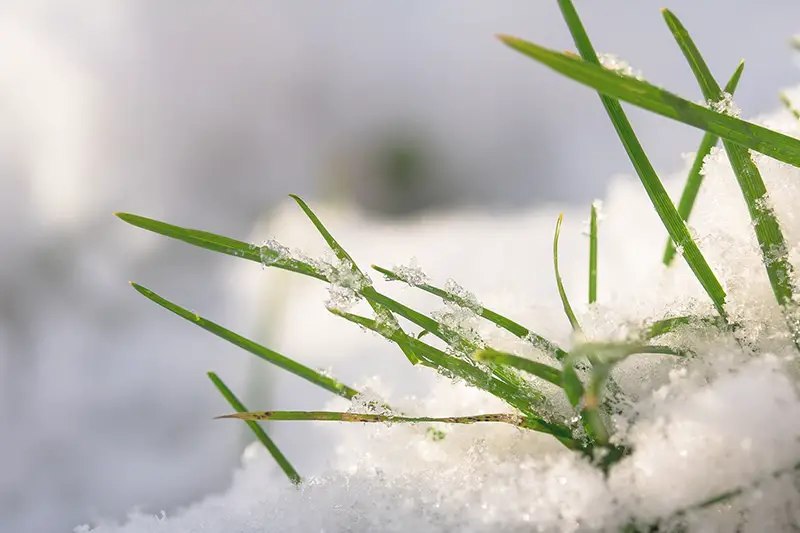
How to Dormant Seed Your Lawn
The steps of dormant seeding are basically the same as any seeding process. We have explained how to dormant seed your lawn below.
1. Prepare Lawn for Seeding
To ensure the success from the dormant seeding process, it’s crucial to prepare the planting area properly. As is the case with any type of seeding, seed-to-soil contact is one of the most important aspects of ensuring a high germination rate. You’ll therefore need to loosen the soil and thatch in the uppermost layer of the turf before dormant seeding.
There are several methods you can use to prepare the planting area for seeding. Aeration, scarification, and dethatching are all suitable practices for this purpose. Comparing scarification vs dethatching, the best method would be scarification; this is essentially a deeper form of dethatching that tackles both the thatch layer and underlying soil. For smaller areas, dethatching with a rake or dethatching mower attachment will suffice. Make sure to collect any plant debris that the process leaves behind.
Core aerating the planting area will further improve the conditions in the turf for seeding. Core aeration involves using an aerator to remove plugs of soil from the turf; this leaves the lawn with lots of holes for the seed to fall into. As a result, your seed will be more protected from being blown or washed away, or eaten by birds and other wildlife.
2. Choose Grass Seed
Choose an appropriate grass seed for overseeding your lawn. As we’ve mentioned, the best fall grass seed for dormant seeding is Kentucky bluegrass, tall fescue, or perennial ryegrass.
3. Sow Grass Seed
Read the instructions for your chosen seed to find out its recommended seeding rate. For seeding, you can use either a drop spreader or broadcast spreader; for smaller areas, a drop spreader is best, otherwise you should opt for a broadcast spreader if seeding a large lawn.
Set your spreader according to the recommended seeding rate before filling up the hopper with the grass seed. Overseed your lawn by sowing the grass seed evenly over the areas you want to fill in.
4. Water Planting Area
Immediately after seeding, water the planting area. You only need to add about 0.05 to 0.10 inches of water. Make sure that you water enough to dampen the soil without making it saturated or soggy.
5. Wait for Spring
Over the following months, keep all traffic from people, pets, and cars off the lawn to protect your seed and your existing grass. Your grass seed will lie in wait until conditions are favorable for its growth in spring. If the newly seeded areas appear thin, your lawn may benefit from an extra overseeding later in the season.

